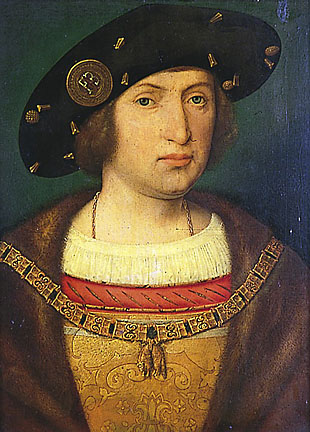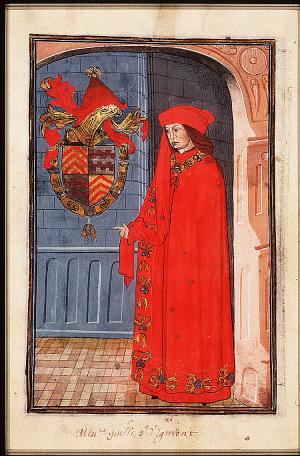
Frederick Henry was the sovereign prince of Orange and stadtholder of Holland, Zeeland, Utrecht, Guelders, Overijssel in the Dutch Republic from 1625 until his death in 1647. In the last seven years of his life, he was also the stadtholder of Groningen (1640-1647).

Maria van Arkel was the only daughter and heiress of Lord John V of Arkel and Joanna of Jülich. She inherited the title to Gelderland from her maternal uncle, Duke Reginald IV, and her son became Arnold, Duke of Gelderland. She was the paternal grandmother of Mary of Guelders, who became Queen of Scots.

Floris van Egmond was count of Buren and Leerdam and Lord of IJsselstein and Sint Maartensdijk. He was stadtholder of Guelders (1507–1511) and Friesland (1515–1518)

Maximiliaan of Egmont (1509–1548) was Count of Buren and Leerdam, and Stadtholder of Friesland from 1540 until 1548. He was the son of Floris van Egmont whom he succeeded as count after his father's death in 1539.

De Graeff is an old Dutch patrician and noble family,

Ilpenstein Castle was a castle of the Free and high Lordship of Purmerend, Purmerland and Ilpendam, located in Ilpendam (Waterland) in the north of the city of Amsterdam.
Cornelis de Graeff was a member of the family De Graeff, a prominent regent family from the Dutch Golden Age. He hold the title 20st Free Lord of Purmerland and Ilpendam.

The Free or high Lordship of Purmerend and Purmerland and after 1618 Purmerland and Ilpendam was a type of local jurisdiction with many rights.

Egmond Castle, also called the Ruins of Egmond, is a ruined medieval castle in the Dutch province of North Holland. It is located in Egmond aan den Hoef in the municipality of Bergen and lies about 7 kilometres (4.3 mi) west of Alkmaar. The castle dates from the 11th century and is the ancestral seat of the Egmond family, whose members became sovereign Dukes of Guelders, Counts of Egmond and Princes of Gavere, Counts of Buren and Leerdam. It is a national monument of the Netherlands.

Philip, Count of Egmont was the fifth Count of Egmont, prince of Gavere and 12th and last Lord of Purmerend, Purmerland and Ilpendam.

William IV of Egmont was Lord of Egmond, IJsselstein, Schoonderwoerd and Haastrecht and Stadtholder of Guelders.

John III of Egmont was first Count of Egmont, Lord of Baer, Lathum, Hoogwoude, Aarstwoude, Purmerend, Purmerland and Ilpendam, and Stadtholder of Holland, Zeeland and West-Friesland.

John IV of Egmont was second Count of Egmont, Lord of Hoogwoud, Aartswoud and Baer, and tenth Free Lord of Purmerend, Purmerland and Ilpendam. He belonged to the House of Egmond.

Frederik of Egmont was count of Buren and Leerdam, Lord of IJsselstein and councilor of Charles the Bold and Maximilian I.

John V, Lord of Arkel was Lord of Arkel, Haastrecht and Hagestein and stadtholder of Holland, Zeeland and West Frisia. He was a son of Lord Otto of Arkel and his wife, Elisabeth of Bar-Pierrepont.

John I, Lord of Egmond was Lord of Egmond, Lord of IJsselstein, bailiff of Kennemerland (1353–1354) and stadtholder of Holland.
Christoffel van IJsselstein was the illegitimate son of Frederik of Egmont, Count of Buren and Leerdam, Lord of IJsselstein, and an unknown mother.

Sint-Maartensdijk Castle was a castle with a rich history. Except for a part of the moats nothing remains of it.












